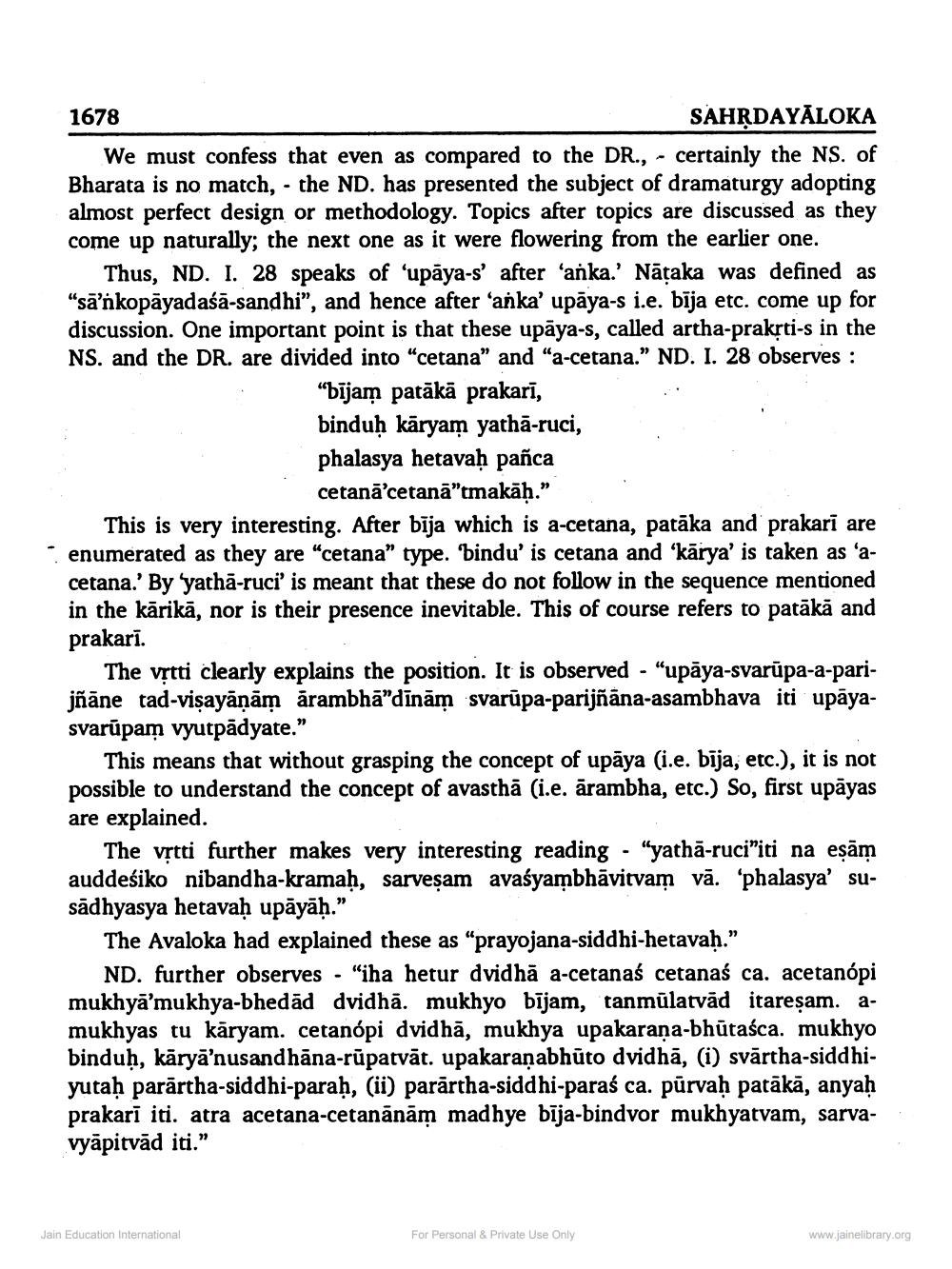________________
1678
SAHRDAYĀLOKA We must confess that even as compared to the DR., - certainly the NS. of Bharata is no match, - the ND. has presented the subject of dramaturgy adopting almost perfect design or methodology. Topics after topics are discussed as they come up naturally; the next one as it were flowering from the earlier one.
Thus, ND. I. 28 speaks of 'upāya-s' after ‘anka.' Nātaka was defined as “sā’nkopāyadaśā-sandhi", and hence after 'anka' upāya-s i.e. bīja etc. come up for discussion. One important point is that these upāya-s, called artha-prakrti-s in the NS. and the DR. are divided into "cetana" and "a-cetana." ND. I. 28 observes :
“bījam patākā prakarī, binduḥ kāryam yathā-ruci, phalasya hetavaḥ pañca
cetanācetana”tmakah.” This is very interesting. After bīja which is a-cetana, patāka and prakari are enumerated as they are "cetana" type. 'bindu' is cetana and 'kārya' is taken as 'acetana.' By yathā-ruci' is meant that these do not follow in the sequence mentioned in the kārikā, nor is their presence inevitable. This of course refers to patākā and prakarī.
The vṛtti clearly explains the position. It is observed - "upāya-svarūpa-a-parijñāne tad-visayāņām ārambhā”dīnām svarūpa-parijñāna-asambhava iti upāyasvarūpam vyutpădyate.”
This means that without grasping the concept of upāya (i.e. bīja, etc.), it is not possible to understand the concept of avasthā (i.e. ārambha, etc.) So, first upāyas are explained.
The vștti further makes very interesting reading - "yathā-ruci'iti na eşām auddeśiko nibandha-kramaḥ, sarvesam avaśyambhāvitvam vā. 'phalasya' susādhyasya hetavaḥ upāyāḥ."
The Avaloka had explained these as “prayojana-siddhi-hetavaḥ.”
ND. further observes - "iha hetur dvidhā a-cetanaś cetanaś ca. acetanópi mukhyā'mukhya-bhedad dvidha. mukhyo bījam, tanmūlatvād itareşam. amukhyas tu kāryam. cetanópi dvidhā, mukhya upakarana-bhūtaśca. mukhyo binduh, karya'nusandhāna-rūpatvāt. upakaranabhūto dvidha, (i) svārtha-siddhi yutaḥ parārtha-siddhi-paraḥ, (ii) parārtha-siddhi-paraś ca. pūrvah parākā, anyaḥ prakarī iti. atra acetana-cetanānām madhye bīja-bindvor mukhyatvam, sarvavyāpitvād iti."
Jain Education International
For Personal & Private Use Only
www.jainelibrary.org




